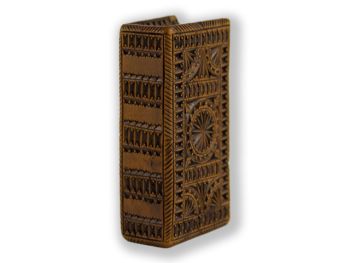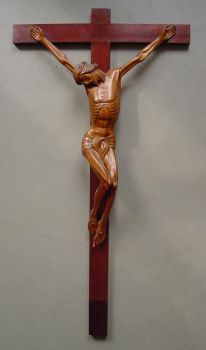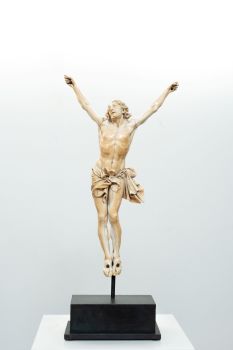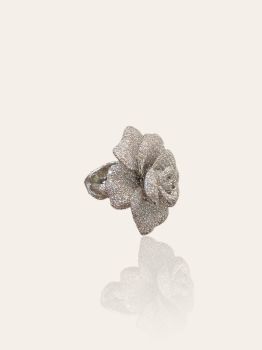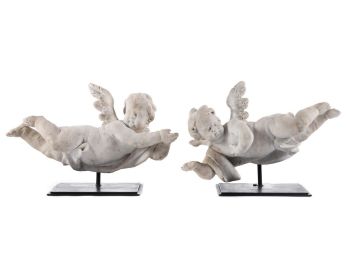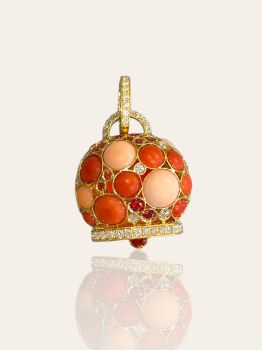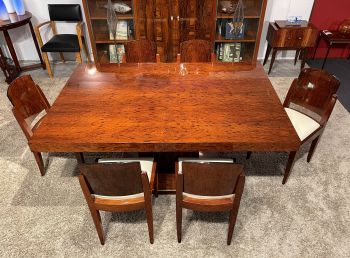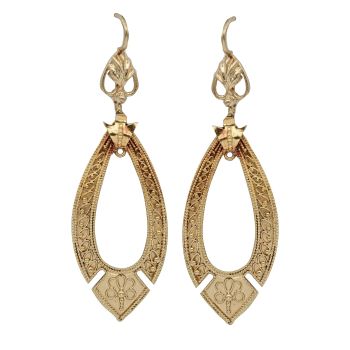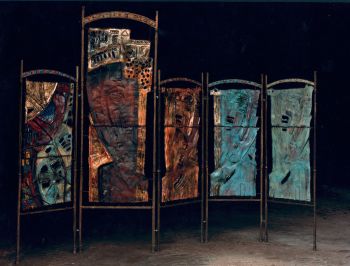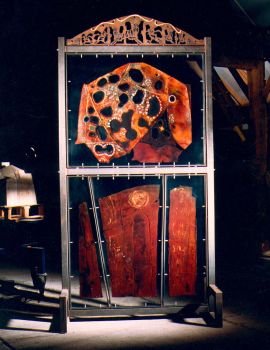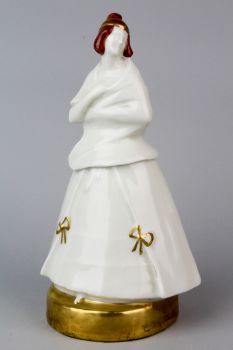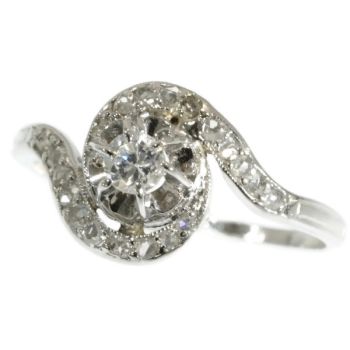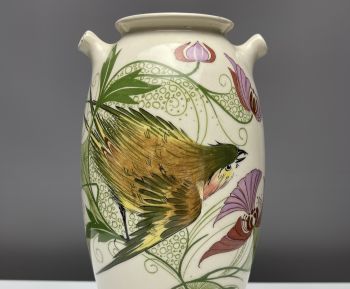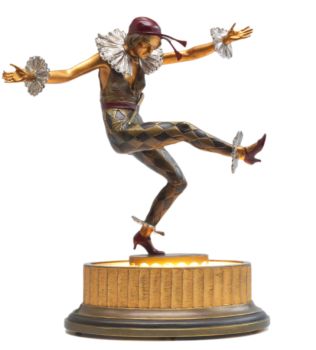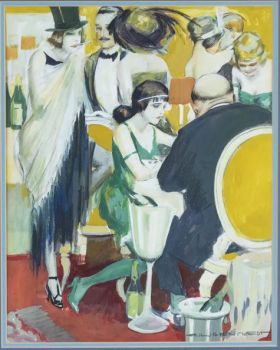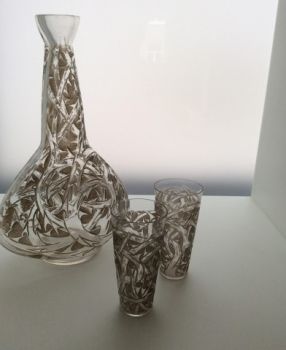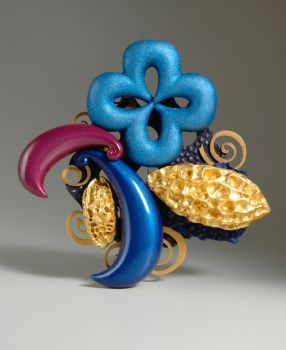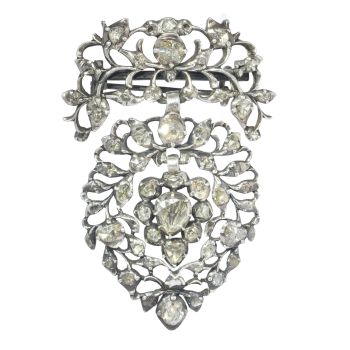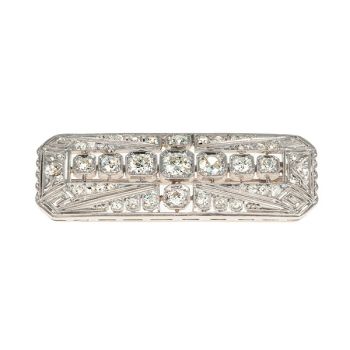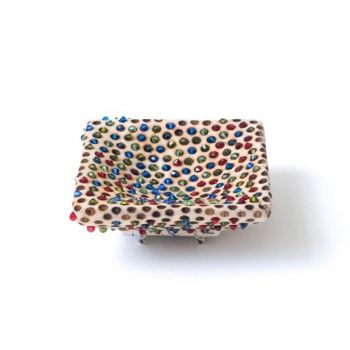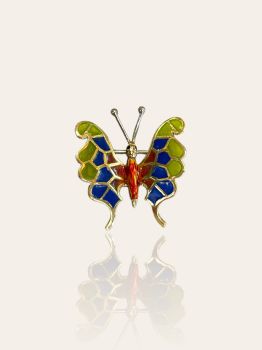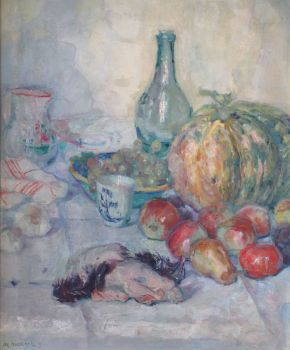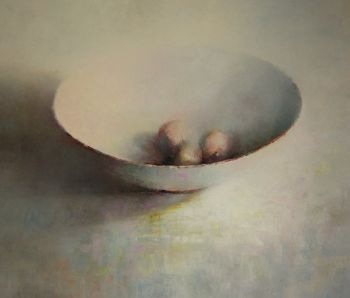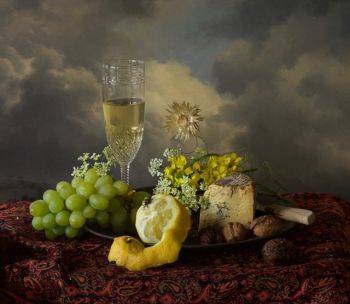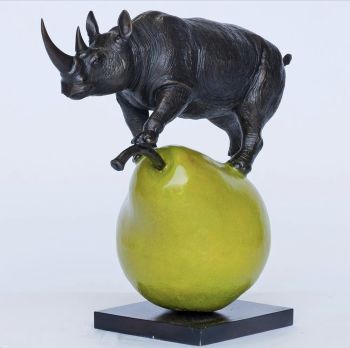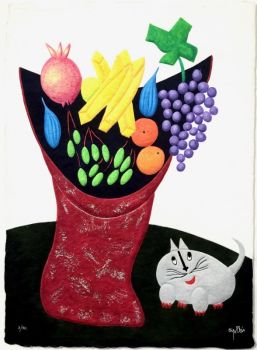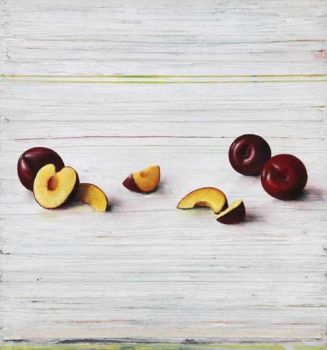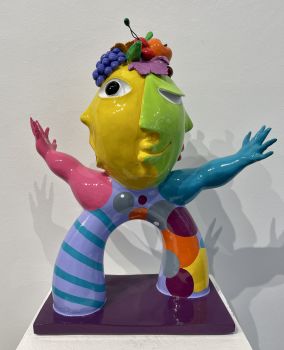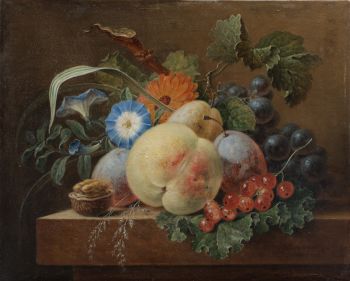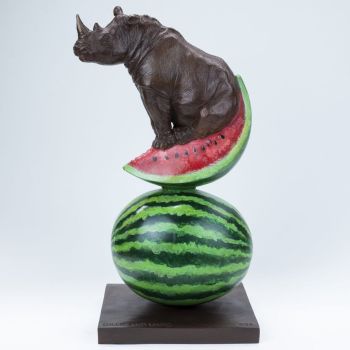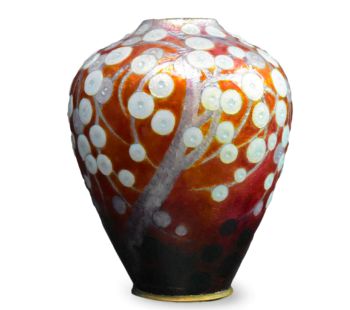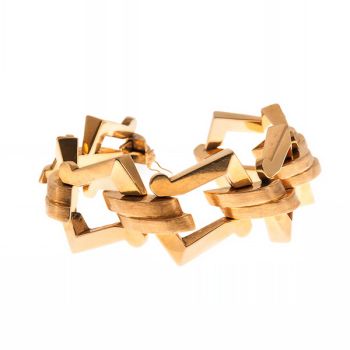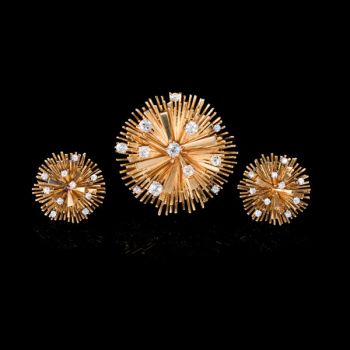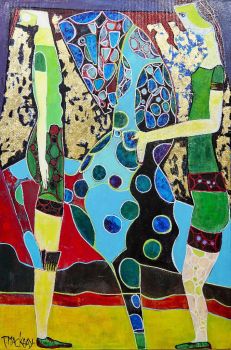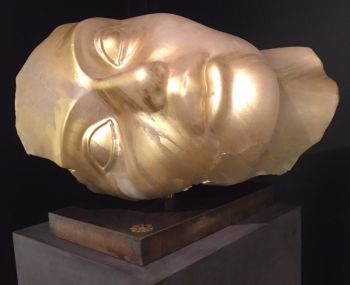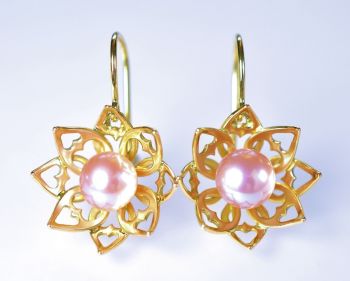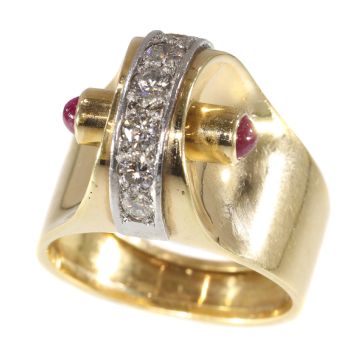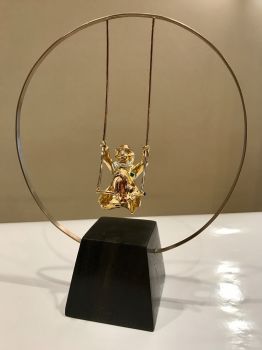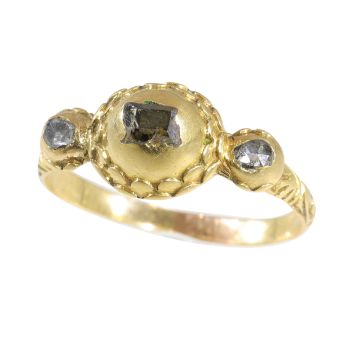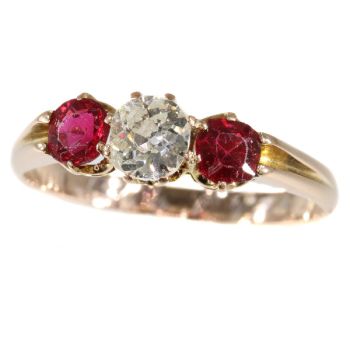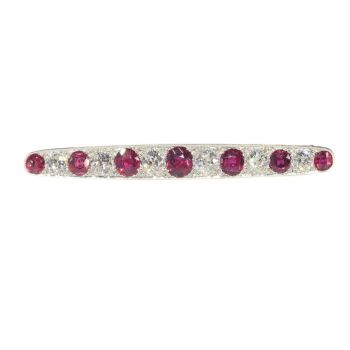Werkelijk schitterende Art Deco clip, typisch Japonisme, koraal en carre geslepen onyx 1920
Onbekende Kunstenaar
KoraalGoudRood koraal
€ 5.500
Adin Fine Antique Jewellery
- Over kunstwerk
This 18K yellow gold Art Deco brooch from 1920 seems to be an abstract tropical fruit engraved in coral freshly picked from the garden of Japonism. Still attached on four veins of carré cut onyx alternating with coral, this tempting jewel is preserved on an exquisite open work back with leafy patterns through which you could fancy yourself on your own desert island.
Antique jewelry object group: brooches
Country of origin: Although it does not carry any legible control marks we believe this to be of Belgian origin.
Style: Art Deco
(more info on styles)
Style specifics: Abstract motives and geometrical forms are quite typical for the Art Deco period.
Period: ca. 1920
(events and facts in 1920)
Source of inspiration: Japan
Material: 18K yellow gold
(more info on precious metals)
Extra information: Japonism, or Japonisme, the original French term, which is also used in English, is a term for the influence of the arts of Japan on those of theWest. The word was first used by Jules Claretie in his book L'Art Francais en 1872 published in that year. Works arising from the direct transfer of principles of Japanese art on Western, especially by French artists, are called japonesque.
Precious stones: coral onyx
(more info on precious stones)
Birthstones: Moonstone is the birthstone (or month stone) for July.
(more info on birthstones)
Hallmarks: No trace.
(more info on hallmarks)
Condition: excellent condition
(more info on our condition scale)
Dimensions: width 2.17 cm (0.85 inch), height 3.08 cm (1.21 inch)
Weight: 11.30 gram (7.27 dwt)
Reference Nº: 10015-4334
See also our:
all brooches, double clip, art deco jewelry, jewelry with coral, jewelry with onyx , latest acquisitions,
antique jewelry, estate jewelry, vintage jewelry or modern jewelry
Jewelry with birthstones (or month stones) for:
January - February - March - April - May - June - July
August - September - October - November or December.
Additional information:
jewelry glossary - wall of fame - visit us in Antwerp - subscribe to our mailinglist.
What is antique jewelry? - What is estate jewelry? - What is vintage jewelry? - Over kunstenaar
Het kan voorkomen dat een kunstenaar of maker onbekend is.
Voor sommige werken is het niet te bepalen door wie het gemaakt is of dat het is gemaakt door (een groep) ambachtslieden. Voorbeelden zijn beelden uit de Oudheid, meubels, spiegels of handtekeningen die vaak niet duidelijk of leesbaar zijn. Maar ook sommige werken zijn helemaal niet gesigneerd.
Ook kunt u de volgende beschrijving vinden:
•"Toegeschreven aan …." waarschijnlijk een werk van de kunstenaar maar niet zeker of gedeeltelijk
•“Atelier van ….” of werkplaats van” een werk uitgevoerd in het atelier of atelier van de kunstenaar, eventueel onder zijn toezicht
•“Cirkel van ….” een werk uit de periode van de kunstenaar die zijn invloed laat zien, nauw verbonden met de kunstenaar maar niet noodzakelijkerwijs zijn leerling
•“Stijl van ….” of “Volger van ….” een werk uitgevoerd in de stijl van de kunstenaar, maar niet noodzakelijk door een leerling; kan eigentijds of bijna eigentijds zijn
•“Wijze van ….” een werk in de stijl van de kunstenaar maar van latere datum
•"Na …." een kopie (van welke datum dan ook) van een werk van de kunstenaar
•“Getekend…”, “Gedateerd….” of “Ingeschreven” dan is het werk gesigneerd/ gedateerd/ ingeschreven door de kunstenaar. De toevoeging van een vraagteken duidt op een element van twijfel
•"Met handtekening ...", "Met datum ...", "Met opschrift..." of “Draagt signatuur/datum/opschrift” dan is de handtekening/datum/opschrift toegevoegd door iemand anders dan de kunstenaar
Bent u geïnteresseerd om dit kunstwerk te kopen?
Artwork details
Related artworks
Onbekende Kunstenaar
A pair of angels Antwerp, 17th century, Carrara marble17th century
Prijs op aanvraagFrederik Muller
1 - 4 / 12Gabriel Argy-Rousseau
Gabriël Argy-Rousseau – Crabes et Algues vase – 19201920 - 1929
Prijs op aanvraagAntiques Emporium
1 - 4 / 24- 1 - 4 / 24
Marie-Jeanne van Hövell tot Westerflier
Contemplation 012006 - 2017
Prijs op aanvraagKoster Fine Art Gallery
1 - 4 / 24Onbekende Kunstenaar
Enchanting 1870s Vintage Fly Brooch: Victorian Elegance in Gold1870
€ 4.600Adin Fine Antique Jewellery
 Gecureerd door
Gecureerd doorDanny Bree
1 - 4 / 24- 1 - 4 / 12








